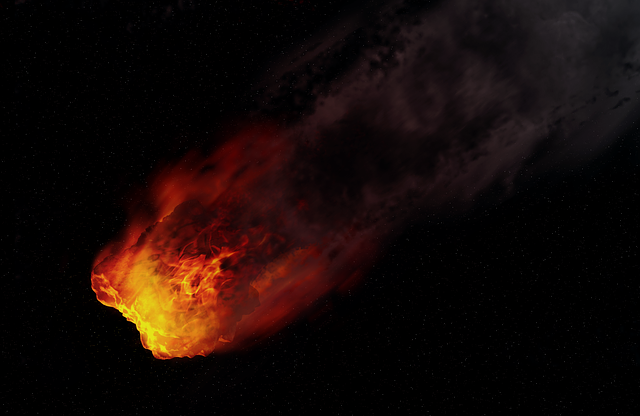
Almost a billion years ago a meteorite, which travelled at 40,000 mph, more than half a mile wide, hit earth with a force of 145 billion tonnes of TNT. Now, the evidence of its scattered debris has been found 25 miles off the coast of northwest Scotland.
As per the scientists, the meteor's force was 940 million times greater than the Hiroshima nuclear bomb.
In 2008, scientists first raised this possibility of discovering the evidence of that huge meteor's debris and now a team of researchers from Aberdeen and Oxford said that there is a possibility that any trace had been preserved over the millennia.
Dr Ken Amor at Oxford University said that "The material excavated during a giant meteorite impact is rarely preserved on earth, because it is rapidly eroded, so this is a really exciting discovery."
As per the researchers, the three billion tonne meteor smashed down in the Minch basin, somewhere between isles of Lewis and Harris in the Outer Hebrides and Ullapool.
"It was purely by chance this one landed in an ancient rift valley where fresh sediment quickly covered the debris to preserve it," Dr Amor stated.
The researchers have discovered the centre of the impact zone in the Minch that is from 15 to 20 km west of the beach. The team will know to start the survey on the site to learn more about the impact.
1.2 billion-years-ago when the meteor hot earth, when the continents were differently arranged, most life was in the oceans and there were no plants on the land. Dr Amor mentioned that it would have had "quite a spectacle" when a meteor travelling at 40,000 mph struck a barren land, spreading dust and rock debris over a wide area. The scientists also mentioned that Scotland would have been quite close to the equator and in a semi-aired atmosphere.
In the study, which was published in the Journal of the Geological Society, the researchers stated that the "ejecta blanket" thrown out, due to the collision, would have scattered this cloud 50 km away. At that location, there were elements, which is characterised as extra-terrestrial materials and evidence of microscopic parallel fractures, which suggest a meteorite strike.
The experts also claimed that it is very difficult to find out the evidence of the largest impact as the raters are often obliterated by erosion, burial and plate tectonics.
As per Dr Amor, to discover the debris of the biggest meteor impact the team needs "a new high-resolution geophysical survey - a 3D seismic survey."
In addition, he said that being offshore this process will cost a lot of money and "I shall be putting in a grant proposal to do some seismic work. That would be the first step and would greatly assist the definition of an impact structure."








